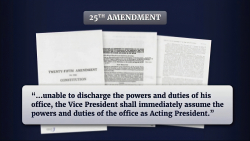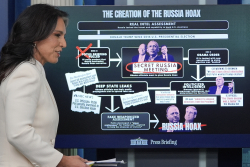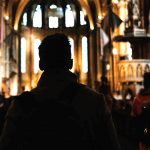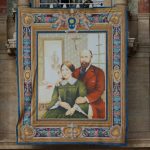Arnold Schoenberg’s string sextet Verklärte Nacht (Transfigured Night) has everything one could wish for in a work of fin de siècle Europe: haunted groves with black branches reaching into the moon, illicit sex, an illegitimate pregnancy, and a luminous reconciliation. The program is from Richard Dehmel’s 1896 poem, which inspired the sextet.
The New Hollywood String Quartet advertised Verklärte Nacht as part of their Summer of Angels Concerts at Rothenberg Hall in San Marino, California. The ensemble was also performing two other attractive works—Joaquín Turina’s La oración del Torero (“the Bullfighter’s Prayer”) and Robert Schumann’s Piano Quintet in E-flat Major. The Hollywood String Quartet, in its first incarnation in the 1940s, had a storied connection to the studio system, and Schoenberg’s sextet has as much cinematic drama as one can ask for in music. The conductor Leonard Slatkin introduced Verklärte Nacht; his parents, the violinist Felix Slatkin and the cellist Eleanor Aller, founded the original quartet. According to Slatkin, Schoenberg was delighted when the ensemble presented the piece to him. Schoenberg then offered them “refreshments” of doughnuts and bourbon—in 104-degree weather. His mixture of sweet and intoxicating seems only too appropriate for the work. It was as if Schoenberg were performing too.
Though the weather was better in Los Angeles County on that Sunday, the New Hollywood String Quartet’s Verklärte Nacht reminded me of the first quartet’s recording from 1950. It’s precisely what Schoenberg wanted, if Slatkin’s anecdote is any indication. The members of the NHSQ, with the additions of the violist Nokuthula Ngwenyama and the cellist Alban Gerhardt, were unusually free with the tempo, which underscored the drama of the piece. A slow, funereal moment would become frantic in the next bar, only to subside into a troubled introspection. Their range of dynamics was impressive as well. At points, I didn’t think they could reach a more resonant fortissimo, but they did. I suspect that the NHSQ’s work as studio musicians makes them more adept at articulating Schoenberg’s latent expressionism, which explains why the original quartet’s 1950 recording was so successful. As Slatkin said, “it put them on the map.”
That said, Verklärte Nacht shares more with the wind and sea of Wagner’s imagined Cornwall in Tristan und Isolde than the “air of another planet” we breathe in Schoenberg’s later expressionist compositions. It’s lush music. Its dissonances are as lurid as tonal music allows, but it is tonal. We never lose a sense of direction and inevitability. While I love the piece, I wonder if our cultural and emotional styles have changed too much to appreciate its sometimes-histrionic effects (or, what’s worse to contemplate, that we could be too close to them). What sounded exhilarating at the turn of another century might be approaching Sontagian camp—too deadly serious and exaggerated to be convincing. Though concert music’s abstraction prevents it from fully embracing camp, the piece’s artifice, paired with Dehmel’s program, does gesture toward it. But it is a brilliant work. We hear its motifs undergo endless creative variation, and no note seems misplaced. When we reach its radiant end and hear the initial motif “transfigured,” it feels necessary.
The NHSQ began the concert with the Spanish composer Turina’s La oración del torero. I know Turina primarily through Andrés Segovia’s mid-century recordings of his music, in which he evokes Manuel de Falla or Ravel in his Spanish-Basque mode. Turina wrote La oración for a quartet of lutes—an ensemble sure to consign a work to oblivion, but he rescued it by arranging it for strings. It’s a lovely piece and was an excellent introduction because it served the NHSQ’s idiosyncrasies. The work begins with a fluttering, measured tremolo that sounds anxious in other readings, but with the NHSQ it was relaxed and warm—appropriate for an ensemble based in Los Angeles, as are its Spanish effects. We heard this warmth in the rest of the program. Their sound is full and never overstated, and no player dominates the ensemble.
In the second half, the pianist Olga Zado joined the NHSQ to play Schumann’s Piano Quintet in E-flat Major. In the notes, the Hamburger Abendblatt describes her as a “master of the magical art of rubato,” which I read as flattering boilerplate, until I heard her perform. In the first movement, an Allegro brillante, after the quintet plays a series of marcato chords in strict time, Zado’s piano rises above the strings with some rolling arpeggios as the other parts subside to individual lines. Here, she made the rhythm swoon. Though it sounds extravagant to be moved by a second of hesitation, then quickening, of notes on a piano, and it’s hopeless to justify the experience, it was “magical.” She has a seductive tone, and Rothenberg’s transparency only made her touch more appealing. The ensemble’s realization of Schumann’s quintet was the most accomplished on the program and gave the piece the joyful magnanimity that it deserves. I sometimes hear instability in a piano quintet. It’s a compelling medium, but tonally saturated and busy, even messy. With Olga Zado and the NHSQ, it was balanced and opulent.
Reflecting on Slatkin’s anecdote—that Schoenberg gave his imprimatur to the original quartet’s interpretation—I was reminded that a composer isn’t always his own best advocate, or critic. Perhaps Verklärte Nacht should be performed in a way that Schoenberg may have disapproved of—that ensembles should place its transcendent and eerie atmosphere in the foreground at the expense of its few overstated gestures. Its incipient expressionism doesn’t speak in the same credible tones it did in the last century. Its intoxicating sweetness may be too much.

















